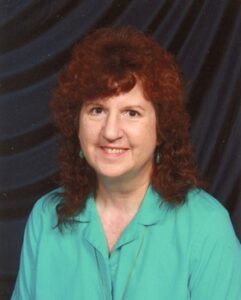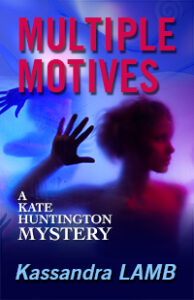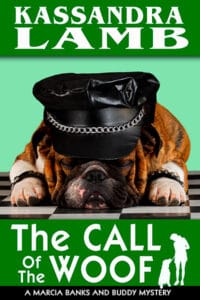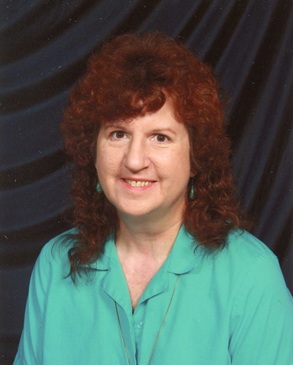
US mystery writer Kassandra Lamb shares her story of transformation from pantser to plotter
When it comes to planning their self-published books, many indie authors identify with one of two distinct camps: the plotter (who plans the book's structure before starting to write) and the pantser (who flies by the seat of their pants, making it up as they go along). There are no rights and wrongs about which to be, and some feel they're a bit of both. And Kassandra Lamb‘s guest post today demonstrates that it's ok to change your mind, especially as you grow as a writer and self-publishing author…
For eight years, I’ve been a die-hard pantser. No outline, no character sketches… just sit down and write. But now I’m going over to the other side, or rather straddling the cusp.
Starting Out as a Pantser
I’ll always be grateful for my pantser roots. I didn’t successfully finish a manuscript until I realized I was a pantser. For years, I’d write the beginning of a story, outline the rest and then the whole thing would languish in my hard drive. I’d lost interest. The story had already been told.
In 2009, I sat down to once again tweak the opening of a novel I’d been playing with for fifteen years. (Yup, fifteen years!) But I couldn’t find the outline. Somehow I’d lost the file. So I started writing, and six weeks later the first draft was finished.

Written by the seat of the pants…
Now it’s 2017. That book, Multiple Motives, is the first in a nine-book mystery series, and I’ve recently released Book 3 in a new series. But in recent years, it’s been like pulling teeth to get through a first draft.
What Has Changed?
While writing this last story (The Call of the Woof, or Woof for short), I finally identified the problem: my motives for writing have changed.
Initially, the ideas arrived, the words flowed, and I wrote for the sheer pleasure of seeing what happened next.
Then the first-drafting process became more challenging. My editor said it was because I was a better writer. My stories were more complex, my characters had more depth, etc. She’s probably right, but something else was happening as well.
More and more, I was writing to a schedule, especially after I started the second series. If too much time passes without a new release, sales droop. The pressure is on to pump out more stories to keep readers interested.
Don’t get me wrong, this is good motivation. How can you not want to produce stories for your adoring fans?
But it wasn’t the same. I still loved the writing process—when the words were flowing. But all too often they weren’t. Before, the scenes would unfold in my mind as I went along. Now, I’d get to the end of a scene and think “What’s next?” And no answer would come. Often that would be the end of new words for that day.

Plotting to the rescue
With Woof, as I got closer to the end and had a clearer idea of what scenes still needed to happen, the writing pace picked up. Instead of forcing out a few hundred words a day, I was breezing through several thousand.
The story was flowing and I was having fun again!
How Plotting Rekindled the Joy of Writing
Then I thought about the next project coming up, and felt nothing but dread as I faced the void between the opening and the climax. So I experimented with outlining. While Woof was “resting” before the editing process, I did a bare-bones outline for that next story.
And I’m excited about writing it! Indeed, I found myself stealing an hour here and there to pluck away at it, when I was supposed to be editing Woof (and I love editing).
With the plot points already thought out that will get me through the murky middle, all I have to do is enjoy the flow of the words.
I doubt I’ll ever be a full-blown plotter with character sketches and beat sheets and such. But if I have a better idea of where I’m going, I think I will get there a lot easier and faster in the future. And have more fun doing it!
OVER TO YOU Have you moved from pantser to plotter, like Kassandra, or journeyed in the opposite direction? Or do you find yourself doing a bit of both? What works best for you as a writer? Join the conversation via the comments box.
#Writers - can/should pantsers ever change to plotters? Here's how @KassandraLamb did! Share on XOTHER THOUGHT-PROVOKING POSTS ABOUT PLOTTING V PANTSING (FROM THE ALLi ARCHIVE)





HI Kassandra, thanks for your post. We almost always see posts about pantsers becoming plotters, but not the other way round. Usually it’s because plotting seems to lead to quicker books and more output. I’m a pantser and I’m confident that I could never become a plotter because my process involves not knowing what’s going to happen at all, until I write the next sentence and find out! That’s where my joy comes from. I do like that your switch to plotting has given you motivation to write. That’s a better reason than becoming speedier, in my opinion. Go where the joy is.
I remember reading about author Kate Grenville’s process: when she outlined a book and then the thought of “fleshing it out” filled her with boredom! The plotting had been the fun part. She’s described her process in writing “Lillian’s Story”: she explored research and information related to the book to inspire ideas, then went where the energy took her in the writing. It’s a form of pantsing. She’s won several literary awards including the Booker.
Hi, Virginia. “Go where the joy is.” Absolutely!
That is pretty much my point, that we need to find where our joy is on the plotter/pantser continuum. I totally applaud and celebrate your pantsing!
And I’m not sure that plotting increases output. I once wrote the first draft of a 90K novel in one week, with nothing more at the start than a vague idea of who did what and why. Then I went on to write another first draft that same summer in five weeks.
My more recent realization is that our process can change, and now that bare-bones outline of plot points saves me from frustration.
And today I had a new experience. I had a story idea but couldn’t quite see where it was going. I gave myself permission to run with it, since I now know I can use my brainstorming/bare-bones outlining if the pantsing breaks down on me. Yay!
I love the way you have dealt with this tricky choice and made it okay to walk a line. Me, I’ve tried planning and plotting and everything falls apart. I really need to write in an organic way. Plotting and planning does make a lot of sense to me, artists will often use this method, rather than beginning a masterpiece in a not too sure what will happen kind of an approach. Pantser for me, but I can see where you’re coming from.
Thanks, PR. “Walking a line” is a good way to put it. And ultimately we each need to use whatever process works for us.
My first novel was a pantser, 120k fantasy epic completed in a month. I knew roughly where I wanted the story to go, and it just poured out. I doubt whether it will ever be published, because it wasn’t the most startlingly original story, but it got me started.
With subsequent books, and I’ve written four now (the last of which is going to be published), I’ve plotted more and more and found it much easier to write fairly complex and interwoven plots as a result. I don’t go to the lengths of whiteboard and marker pens and plot diagrams, but I do know roughly what I want from each chapter, and I have a clue as to each main character’s arc. It’s much easier to write as a result, less “writer’s block” and, in my personal experience, a better reception from the industry for the finished product. Between whiteboard and marker pens, and total pantsing, there’s a lot of room for at least sketching out the path of your book. If you have problems getting stuck in front of a blank page, I’d recommend trying at least a thumbnail outline.
You bring up yet another middle-ground variation of pantser/plotter, Richard. I think a lot of us are somewhere in the middle.
Also your comment got me thinking about genre. I would imagine complicated fantasy epics are better off with at least some plotting. Total pantsing would make it too easy to get lost in the labyrinth and/or have inconsistency errors in your fantasy world.
So genre matters too, folks, in finding your place on the plotter/pantser continuum.
I am a panster more than a plotter in my writing of fiction. I suppose I am a plotter only when the story has kicked off and I need to envision how it will end. Even then, I revert to being a panster as that emerges more naturally. Either way, I suppose it’s what gets the creative juices flowing.
Exactly, Mala. And I’m always open to pantsing it when the words are flowing in a different direction than the one I’d outlined.